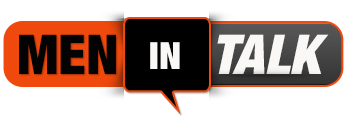Aligning Curriculum with MN Research Standards: Strategies for Educators
Typically the Minnesota Science Standards supply a framework for K-12 research education that is designed to ensure students acquire the knowledge and skills necessary to succeed in a rapidly evolving world. These criteria emphasize the importance of scientific literacy, critical thinking, and the application of scientific principles to hands on problems. For educators, aiming their curriculum with these expectations is a critical task that needs careful planning, creativity, along with a deep understanding of both the information and pedagogical approaches this support effective science teaching.
One of the primary strategies for aligning subjects with the MN Science Standards is to integrate the three proportions of science learning: crosscutting concepts, science and engineering practices, and disciplinary central ideas. These dimensions are classified as the foundation of the standards and are made to promote a holistic understanding of scientific disciplines. Educators can achieve this use by designing lessons in addition to activities that simultaneously tackle multiple dimensions, thereby serving students make connections all over different scientific concepts along with disciplines.
For example , when educating a unit on ecosystems, a teacher might incorporate crosscutting ideas such as cause and outcome or energy and topic, while also engaging learners in science and engineering practices like developing and using models or analyzing as well as interpreting data. By doing so, scholars not only learn about ecosystems throughout isolation but also understand how these types of concepts apply to other areas regarding science and the broader universe. This approach encourages deeper understanding and helps students develop typically the critical thinking skills that happen to be emphasized in the MN Scientific disciplines Standards.
Another important strategy could be the use of inquiry-based learning, that aligns closely with the science and engineering practices layed out in the standards. Inquiry-based studying encourages students to ask questions, conduct investigations, and get conclusions based on evidence. This procedure not only supports the development of scientific thinking but also fosters a sense curiosity and engagement inside the learning process. Educators can implement inquiry-based learning by simply designing experiments, projects, in addition to problem-solving activities that require students to actively explore scientific concepts and apply their very own understanding in new in addition to meaningful ways.
To correctly align with the MN Technology Standards, educators should also prioritize hands-on, experiential learning opportunities. These experiences allow students to directly engage with methodical phenomena, making abstract aspects more concrete and attainable. Field trips, laboratory experiments, and outdoor learning activities are all valuable tools regarding bringing the standards to life in the classroom. Additionally , incorporating technology and also digital tools into the program can enhance these hands-on experiences by providing students having access to virtual labs, feinte, and real-time data series.
Differentiation is another key technique for aligning curriculum with the MN Science Standards. Students arrive at the classroom with different backgrounds, abilities, and learning styles, and it is essential for school teachers to tailor their instruction to meet these varied needs. Differentiated instruction can involve providing multiple entry points to get learning, offering a range of examination options, and using flexible collection strategies to support all college students in reaching the standards. In particular, educators might provide scaffolding for students who need additional help in understanding complex concepts, while offering extension activities for those who are prepared to delve deeper into the materials.
Collaboration and professional improvement are also critical components of productive curriculum alignment. Educators need to work together to share best practices, solutions, and strategies for implementing the particular MN Science Standards. Specialist learning communities (PLCs) as well as collaborative planning sessions offers valuable opportunities for teachers to reflect on their instructing, discuss challenges, and build new approaches to instruction. Additionally , ongoing professional development aimed at the standards can help educators stay current with the latest research along with instructional techniques, ensuring that their teaching is aligned most abundant in up-to-date educational practices.
Review plays a crucial role inside aligning curriculum with the MN Science Standards. Effective examination strategies should go beyond standard tests and quizzes to add formative assessments, performance assignments, and other measures that provide a far more comprehensive picture of university student learning. Formative assessments, for example exit tickets, peer testimonials, and observational checklists, can offer immediate feedback to each students and educators, allowing for adjustments to instruction while needed. Performance tasks, which usually require students to apply their knowledge and skills within real-world contexts, are particularly fitting to the goals of the MN Science Standards, as they emphasize the application of scientific concepts as well as practices.
Moreover, aligning programs with the MN Science Criteria requires a focus on equity as well as inclusion. It is essential https://www.belmontvision.com/post/faculty-senate-discuss-updates-to-burs?commentId=8cedaa38-8e49-4f14-8087-98c2759cc2ca that all college students, regardless of background, have access to excellent science education that meets their needs and prepares all of them for future success. Tutors can support equity by incorporating socially relevant teaching practices, making certain all students see on their own represented in the curriculum, in addition to providing additional support for students who may face boundaries to learning. This might involve adapting materials for Esl/ell students, providing additional resources for scholars with disabilities, or generating an inclusive classroom environment that values diverse perspectives in addition to experiences.
Finally, educators must continuously reflect on and perfect their curriculum to ensure this remains aligned with the MN Science Standards. This involves frequently reviewing and updating lesson plans, assessments, and instructional ways of reflect changes in the standards, advancements in science education, and the evolving needs of learners. By staying committed to continuing improvement and adaptation, school teachers can ensure that their curriculum not only meets the standards and also provides a meaningful and engaging finding out experience for all students.
To sum up, aligning curriculum with the MN Science Standards requires a normal approach that includes integrating the three dimensions of science studying, using inquiry-based and experiential learning methods, differentiating instruction, fostering collaboration among teachers, employing effective assessment methods, and focusing on equity along with inclusion. By implementing these strategies, educators can create a subjects that not only meets the factors but also inspires a ongoing passion for science as well as prepares students to prosper in a complex and constantly changing world.

